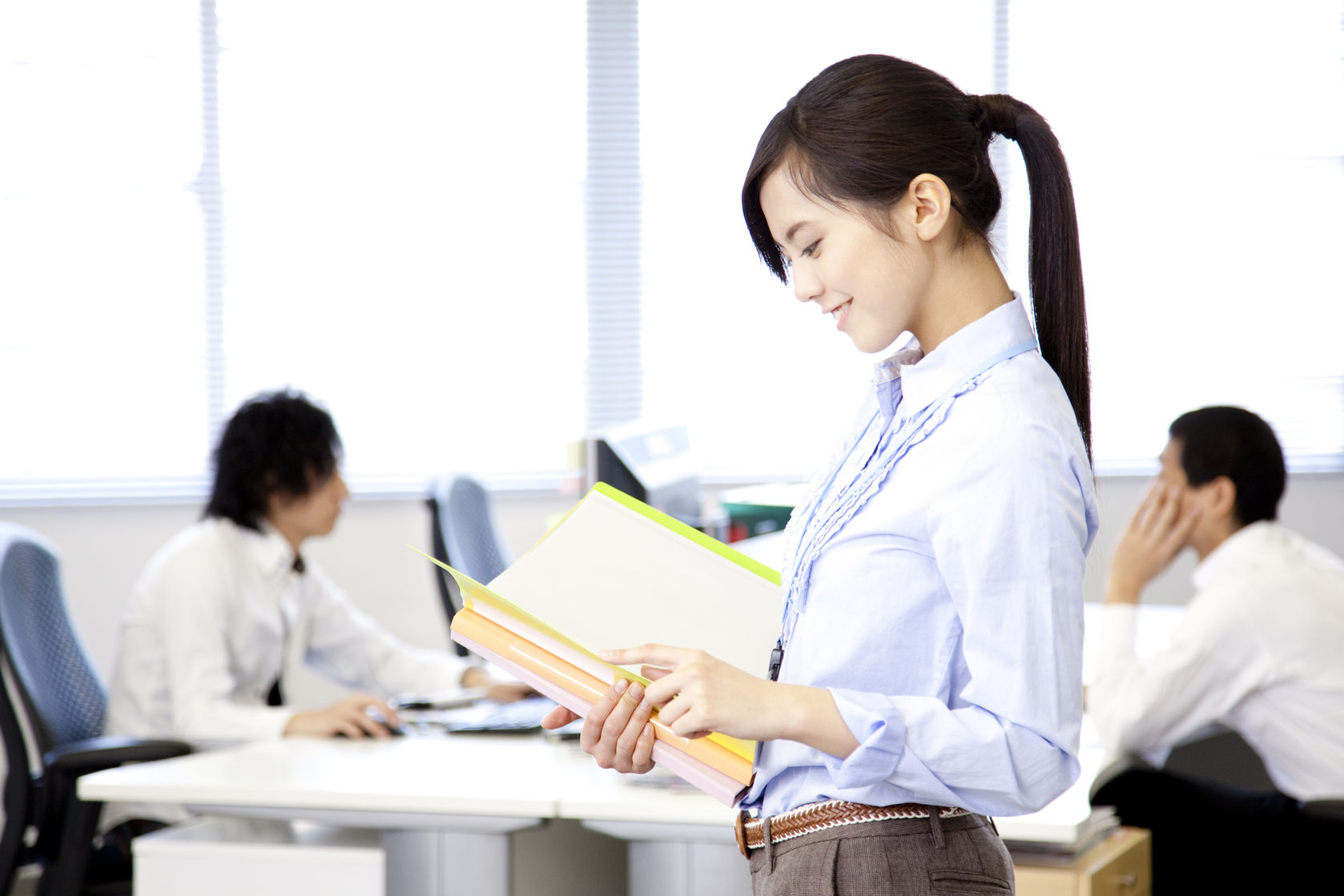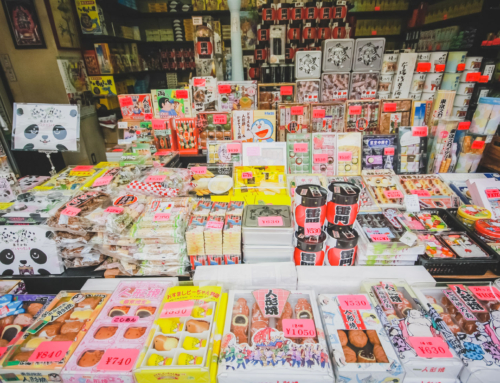Let’s say that you are a freshly recruited ALT in Japan and you are getting yourself prepared for your first day of school. You have your notebook, pencil case, and a bag of omiyage souvenirs for your coworkers. The only thing left is to choose what to wear.
Then you get hit with a wave of anxiousness.
Do I have to wear a tie?
What color jackets/blouses are appropriate?
Should I go formal or casual?
Choosing an appropriate work attire can be a daunting task that many face. It can be especially difficult for the younger ALTs right out of college with no experience working in a full-time job. A first day is nerve-wracking for everyone, and it’s just that much more when you are in a foreign culture.
So, for all the worried new ALTs out there, we have rounded up a list of useful tips for you to follow. Directly from ALTs that worked with us in the past!

Listen up, Guys! Wear a Suit and Tie
The ultimate and most helpful advice for men. If you are in doubt, just make sure to wear a suit and tie. No matter what season of the year or the nature of your contract with the school (part-time), your first day should always be in a suit and tie. The first day at school will usually consist of self-introductions and meeting ALL the staff. In some cases an all-student assembly to welcome you to the school. Everyone will have their attention focused on you, so you don’t want to be as perfect as possible.
On an extra note, try and avoid black ties with a black suit. In Japan, this attire are symbols of a funeral and can be a little off-putting. In addition, be careful of completely white ties, as they are usually worn at weddings. So try and mix up the colors a little!

Now the Ladies! Keep the Attire Low-Key
Next up is the ladies. The ultimate piece of advice for females is to keep the attire as simple and modest as possible. Whether you go in a suit or a dress, try to aim for a look that shows the least amount of skin as possible.
Japan is said to be a ‘modest’ country, and in respected positions such as an educator, this ‘modesty’ is more than a requirement. So wear ‘closed chest’ blouses and ‘at least knee level skirts’. Give the Japanese no reason to comment on your attire. Not to mention, just like the men above, you will be moving around all day with self-introductions, and maybe having hordes of kids come rushing at you. Always the best idea to cover up.
On an extra note, this may not be applicable to some, however keeping the color shades of your attire very simple is always a good idea. Japanese students are used to their teachers wearing plain, simple and darker ‘modest’ shades of clothing. If you suddenly appear wearing a bright green jacket, you are sure to get a lot of attention. Great for those who want to make an impact, but it also gives students a chance to come up with cheeky ‘nicknames’ for you such as ‘Batta’ (Grasshopper).

What About After the First Day?
From here on, after you get over your first day, things get a little bit easier.
Look around and see what the general consensus is among the male and female teachers in the staff room. You will definitely find good hints and clues as to what the ‘General Level’ of work attire is at your specific school.
In general, you will find that most schools are very flexible in their rules of attire. A collared shirt and slacks for men and casual work dress for women.
Note, it really does depend on the type, area and working environment of your school. You will find public schools are less strict, while high performing ‘elite’ schools push for suits all year round.
If you are still a little stuck even after snooping around your staffroom here are some solid pieces of advice you can follow!

Best Not to Follow the Teachers in Athletic Wear
Be careful if you see lots of teachers in athletic wear. Most teachers and also coach clubs wear athletic wear for club activities, gym class, and any manual labor they are required to do as part of their teaching. Some schools are very relaxed with this rule and let the teachers wear their sports outfit for classes. Others are strict and will only allow it where it is appropriate.
Either way for an ALT this attire isn’t the best to follow. In most cases, you will not be participating in situations where you have to run around (unless it’s sports day etc). If a school does allow teachers to wear athletic wear, then it is definitely only reserved for the PE teachers and club coaches. Keep your attire smart and keep the respect of your students.

Wearing Cool Biz in Summer
In the summer, you will hear the words ‘Cool Biz’ a lot. This basically refers to a more casual attire to deal with the humid summers in Japan. For example, men are allowed to wear casual wear such as polo and half-sleeved dress shirts. There is also definitely no need for a tie.
This is so all the poor salarymen do not have to dress is hot suits during Japan’s sultry summers, but it does include teachers too. Most workplaces will have specific dates for when this is ok and will announce it at a regular meeting. If you are coming in the middle of the summer it might be good to ask your teacher the dates for cool biz.

Having a Spare Set of Formal Wear
Having a spare set of formal wear stored away in a locker is always a very handy thing to have. School ceremonies can come up fast in Japan and it is easy to get caught off guard and underdressed. Japan likes their formality and looking good at these events is a great way to win brownie points. Your supervisor or fellow Japanese teachers should give you warning in advance for these events, but in reality, they are busy and sometimes things fall through the cracks. So, try to keep an eye on the school calendar.

Work Attire at Elementary Schools
Elementary schools and working with young kids tend to have the most relaxed dress code. Sports gear, polo shirts, and cargo pants are all fine. The only rule you will most likely come across is the ‘No Jeans’ rule.
However, this freedom can be a blessing and curse because it is also where you will most likely be caught off guard. You can be asked to attend meetings, observations, and ceremonies without warning. Therefore having some more formal wear prepared in your locker or at least have a shirt and tie (jacket for the ladies) to fall back on just in case.

Indoor and Outdoor Shoes for School
Shoes are the most confusing part of dressing for work in Japan. At schools, you are required to take off your outdoor shoes at the school entrance and change into indoor shoes. Indoor shoes can be any type of rubber sneakers, just as long as they haven’t been worn outside before.
For teachers only at one ‘base’ school, this won’t be much of an issue. As you can just leave your pair of indoor shoes at school. However, for ALTs who teach at multiple schools, you will either have to lug an extra pair of shoes with you or place one at each work location.
For ALTs teaching at multiple schools, a good method is to leave indoor shoes at your most frequent schools. Then just use the school slippers at schools you only visit on occasion. This saves you from always carrying your shoes and not having to buy a new pair for every single school you go to.
In Conclusion
Dressing for Japan can be a complicated and daunting task, but with a little planning and time, it becomes easy and almost second nature. First impressions can do wonders and dressing correctly for each situation is important. Not overdressing or underdressing lets your coworkers know you are competent and taking the job seriously. Good luck and have fun with your new work styles!




